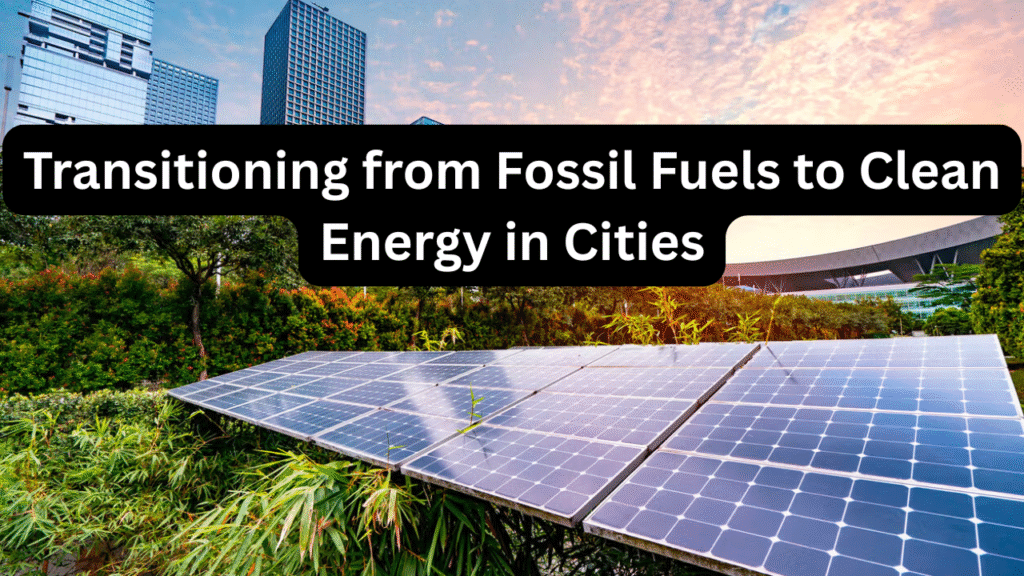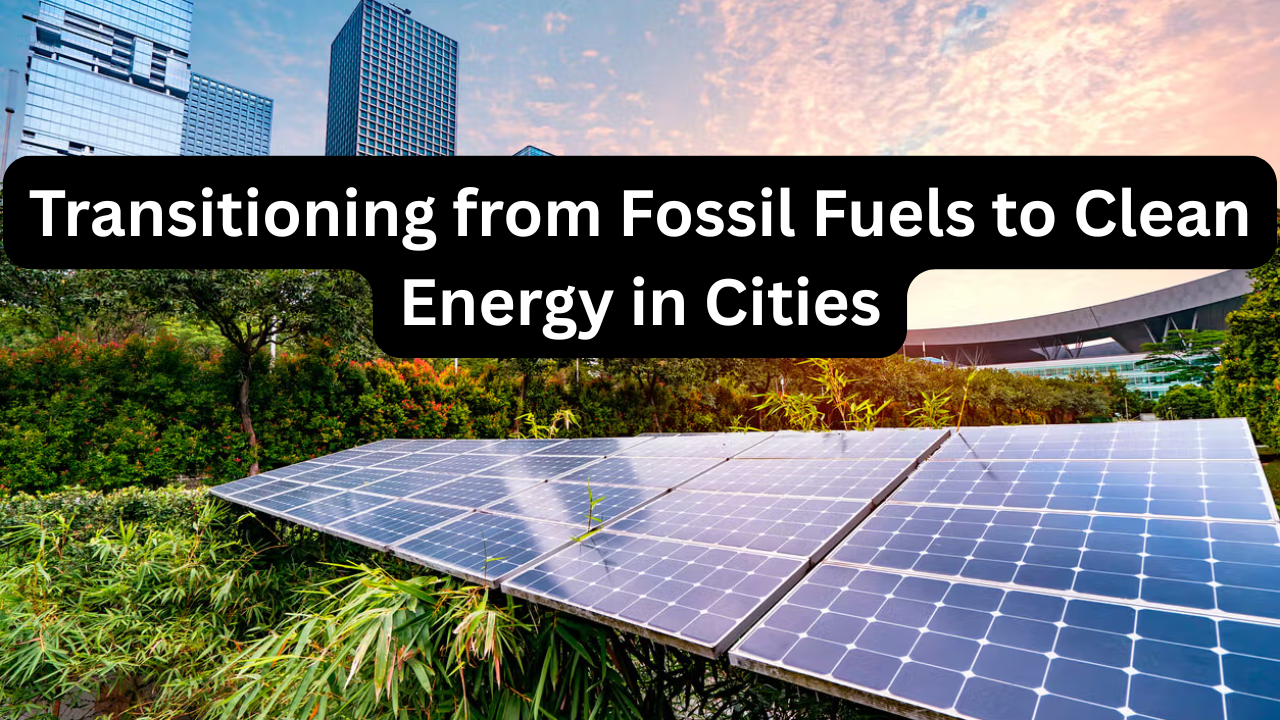
Urban areas worldwide are increasingly prioritizing the shift from fossil fuels to clean energy. Cities are major energy consumers, relying heavily on coal, natural gas, and oil for electricity, heating, and transportation. This dependence contributes significantly to greenhouse gas emissions, air pollution, and climate change. Transitioning to clean energy sources like solar, wind, and geothermal can reduce emissions, improve air quality, and create more sustainable urban environments. This guide explores strategies, benefits, challenges, and key technologies for urban clean energy adoption.
Why Cities Are Focusing on Clean Energy
- High Energy Demand: Cities consume vast amounts of electricity for buildings, transportation, and industry.
- Environmental Impact: Urban areas contribute disproportionately to greenhouse gas emissions.
- Public Health: Reducing fossil fuel use improves air quality, lowering respiratory and cardiovascular illnesses.
- Economic Opportunities: Investment in clean energy generates jobs and stimulates local economies.
Key Strategies for Urban Clean Energy Transition
- Renewable Electricity Generation
- Solar Photovoltaic Panels: Rooftop and community solar systems reduce reliance on coal and gas.
- Wind Energy: Small urban wind turbines can supplement electricity in some locations.
- Geothermal Energy: Provides heating and cooling through heat pumps, reducing natural gas use.
- Energy Efficiency Improvements
- Retrofitting buildings with insulation, efficient windows, and LED lighting.
- Smart energy management systems to reduce peak load demand.
- Electrification of Transportation
- Adoption of electric vehicles (EVs) and electric public transit systems.
- Charging infrastructure powered by renewable electricity.
- District Heating and Cooling Systems
- Centralized renewable-based heating and cooling reduces individual fossil fuel use.
- Policy and Incentives
- Urban governments can offer tax credits, rebates, and low-interest loans to encourage adoption.
- Regulations can mandate renewable energy integration in new construction and retrofits.
Benefits of Transitioning to Clean Energy
- Reduced Carbon Emissions: Directly contributes to climate change mitigation.
- Improved Air Quality: Reduces smog and particulate matter from fossil fuel combustion.
- Energy Security: Less dependence on imported fossil fuels reduces vulnerability to price fluctuations.
- Economic Growth: Clean energy sectors create skilled jobs in installation, maintenance, and manufacturing.
- Resilient Infrastructure: Decentralized and renewable systems are less vulnerable to grid failures.
Challenges in Urban Clean Energy Adoption
- High Initial Costs: Solar panels, EV infrastructure, and district heating systems require significant upfront investment.
- Space Constraints: Dense urban areas may have limited rooftop or land space for large solar or wind installations.
- Grid Integration: Transitioning to renewables requires updates to electricity distribution and storage systems.
- Public Awareness: Residents and businesses must be educated about benefits and participation.
- Regulatory Barriers: Permitting, zoning, and utility policies can slow implementation.
Cost Considerations
| Clean Energy Solution | Typical Cost (USD) | Lifespan | Key Notes |
|---|---|---|---|
| Rooftop Solar Panels | $10,000–$30,000 | 25+ years | Reduces electricity bills, scalable |
| Urban Wind Turbines | $15,000–$50,000 | 20+ years | Site-specific, supplements solar |
| Heat Pumps (Geothermal) | $8,000–$20,000 | 20–25 years | Provides heating and cooling, reduces gas use |
| EV Charging Stations | $2,000–$10,000 each | 10–15 years | Supports transition to electric transportation |
| Energy Efficiency Retrofits | $5,000–$50,000 | 15–30 years | Includes insulation, lighting, and windows |
Implementation Roadmap for Cities
- Assessment: Evaluate current energy use, emissions, and infrastructure.
- Planning: Identify renewable energy sources, potential retrofits, and policy incentives.
- Pilot Projects: Start with small-scale solar, EV fleets, or district heating programs.
- Scaling Up: Expand successful pilots city-wide, integrate smart grid technologies.
- Monitoring: Track energy savings, emissions reductions, and public adoption rates.
Overview Table
| Feature | Description | Benefit to City |
|---|---|---|
| Renewable Electricity | Solar, wind, geothermal energy | Reduces reliance on fossil fuels |
| Transportation Electrification | Electric vehicles and public transit | Lower urban emissions and pollution |
| Energy Efficiency | Building retrofits, smart systems | Reduced energy demand |
| District Heating | Centralized renewable-based heating | Efficient heating with fewer emissions |
| Policy & Incentives | Rebates, tax credits, regulations | Encourages adoption and investment |
| Grid Modernization | Smart grids and energy storage | Reliable, resilient urban energy supply |
Conclusion
Transitioning cities from fossil fuels to clean energy is both a necessity and an opportunity. By integrating renewable electricity, efficient buildings, electrified transportation, and supportive policies, cities can reduce emissions, improve public health, and foster economic growth. Though challenges exist—such as high costs and space limitations—strategic planning and technological innovation can help urban areas achieve a sustainable energy future.
3 Quick FAQs
- Why focus on cities for clean energy transition?
Cities consume the majority of energy and have the greatest potential to reduce emissions. - Can older buildings adopt renewable energy solutions?
Yes, retrofits and smart systems make it possible even in dense urban areas. - Are electric vehicles essential for urban clean energy?
Yes, transportation is a major source of emissions, and EV adoption significantly reduces urban pollution.

